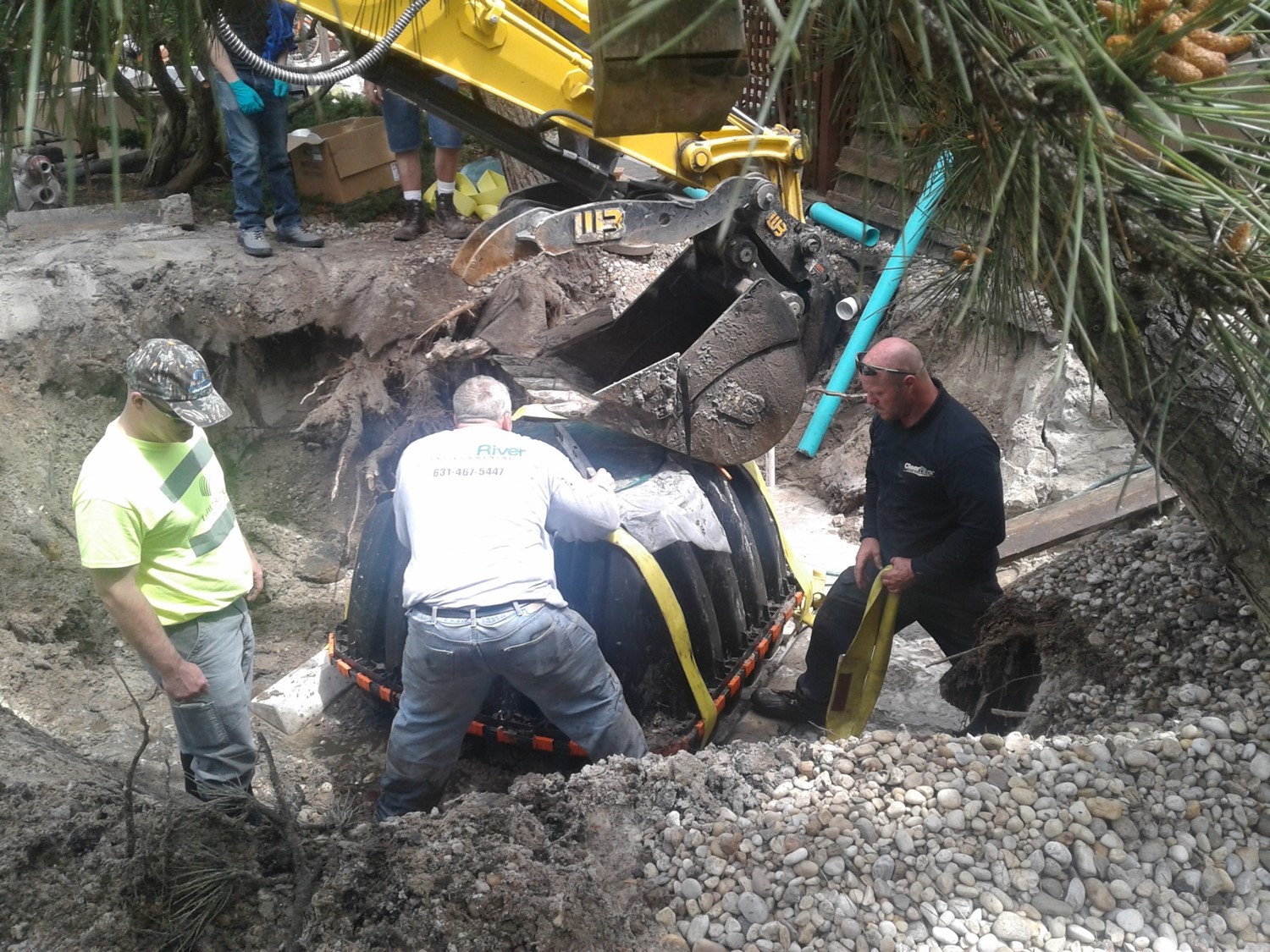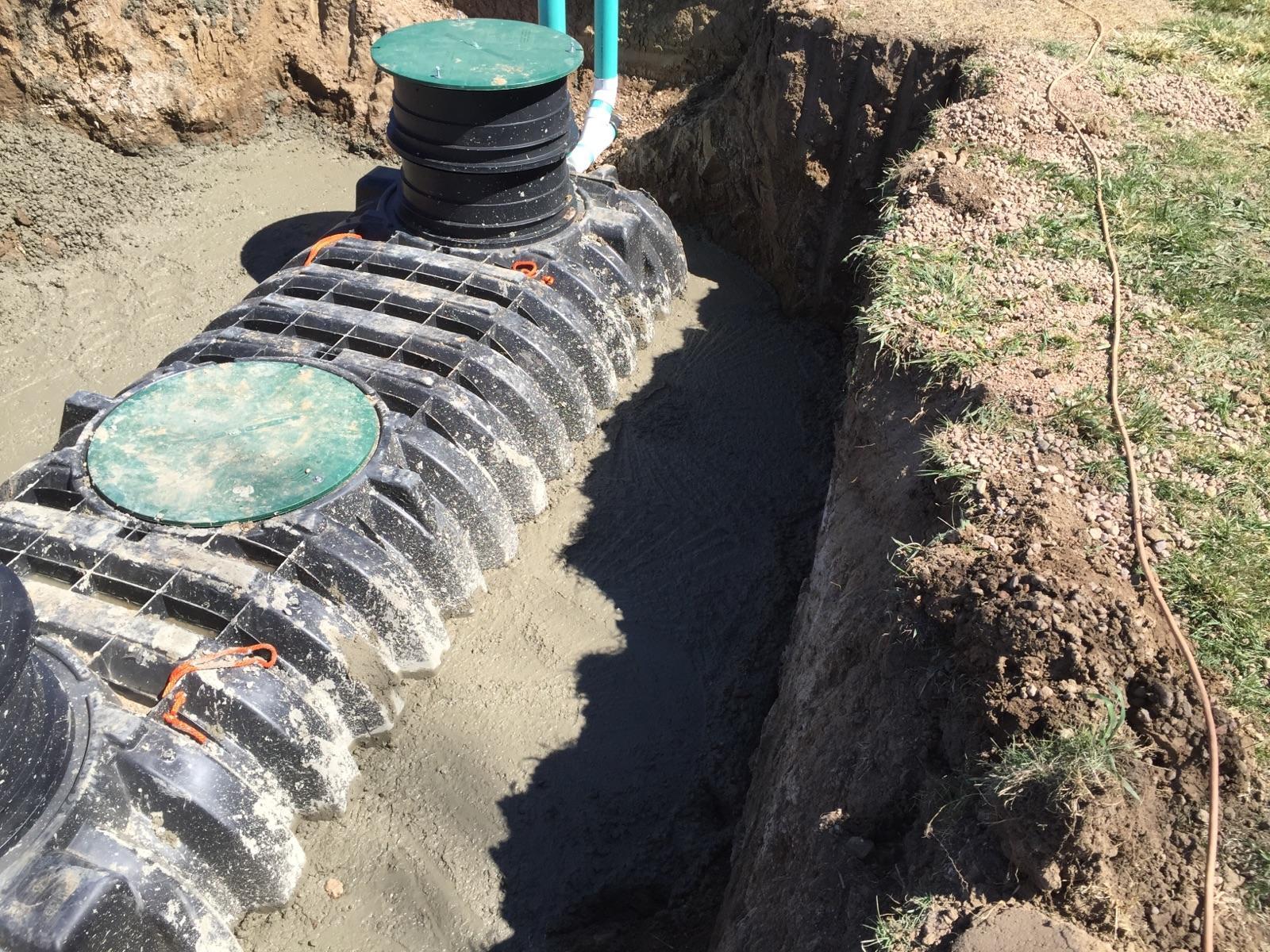When a septic tank requires anti-floatation measures, several approaches can be employed.
One of them is the use of concrete. When concrete is submerged, it weighs about 85 pounds per cubic foot. If concrete is submerged for anti-floatation, then 85 pounds per cubic foot is used to calculate how much is needed. Some designers will specify the use of a concrete collar over or around the tank. The design should specify compaction requirements for backfill below the collar and details on the volume of concrete to be placed around the tank.
Another important consideration is how the concrete is attached to the tank. The details on the design plan should show how the concrete is placed to serve as an anti-floatation device. If "dead man" pieces are used with strapping, the design should provide specific details on materials, placement and connections.
Some manufacturers have incorporated anti-floatation methods into the construction of their products. For example, on fiberglass tanks some manufacturers have incorporated a fiberglass lip around the bottom of the tank to increase the volume of soil counteracting the buoyant forces of the tank.
Anti-floatation measures increase stress forces on the tank. The designer should select specific tanks to withstand the increased forces on the tank structure due to incorporation of anti-floatation measures. The installer should be very careful when selecting equivalent components. Tank structural integrity and load bearing capacity are critical considerations when designing tanks for use with anti-floatation measures.

Concrete tanks must have appropriate construction of the lid, sides and bottom to withstand the greater forces placed on the tank. A concrete tank can have large forces placed on the bottom of the tank due to the force of the water in the excavation. The tank bottom must be able to withstand these forces or else the bottom will break. Additionally, the water level in a pump tank will fluctuate. This water level fluctuation will result in changing forces on the bottom of the tank. If the tank material has the ability to flex due to these changing forces, it may break over time due to material fatigue. The installer should never select equivalent tanks based solely on their capacity when anti-floatation measures will be used.
Click here to read about how to conduct a buoyancy analysis to see if tank stability is a concern.
About the author
Sara Heger, Ph.D., is an engineer, researcher and instructor in the Onsite Sewage Treatment Program in the Water Resources Center at the University of Minnesota. She presents at many local and national training events regarding the design, installation and management of septic systems and related research. Heger is education chair of the Minnesota Onsite Wastewater Association and the National Onsite Wastewater Recycling Association, and she serves on the NSF International Committee on Wastewater Treatment Systems. Ask Heger questions about septic system maintenance and operation by sending an email to kim.peterson@colepublishing.com.







